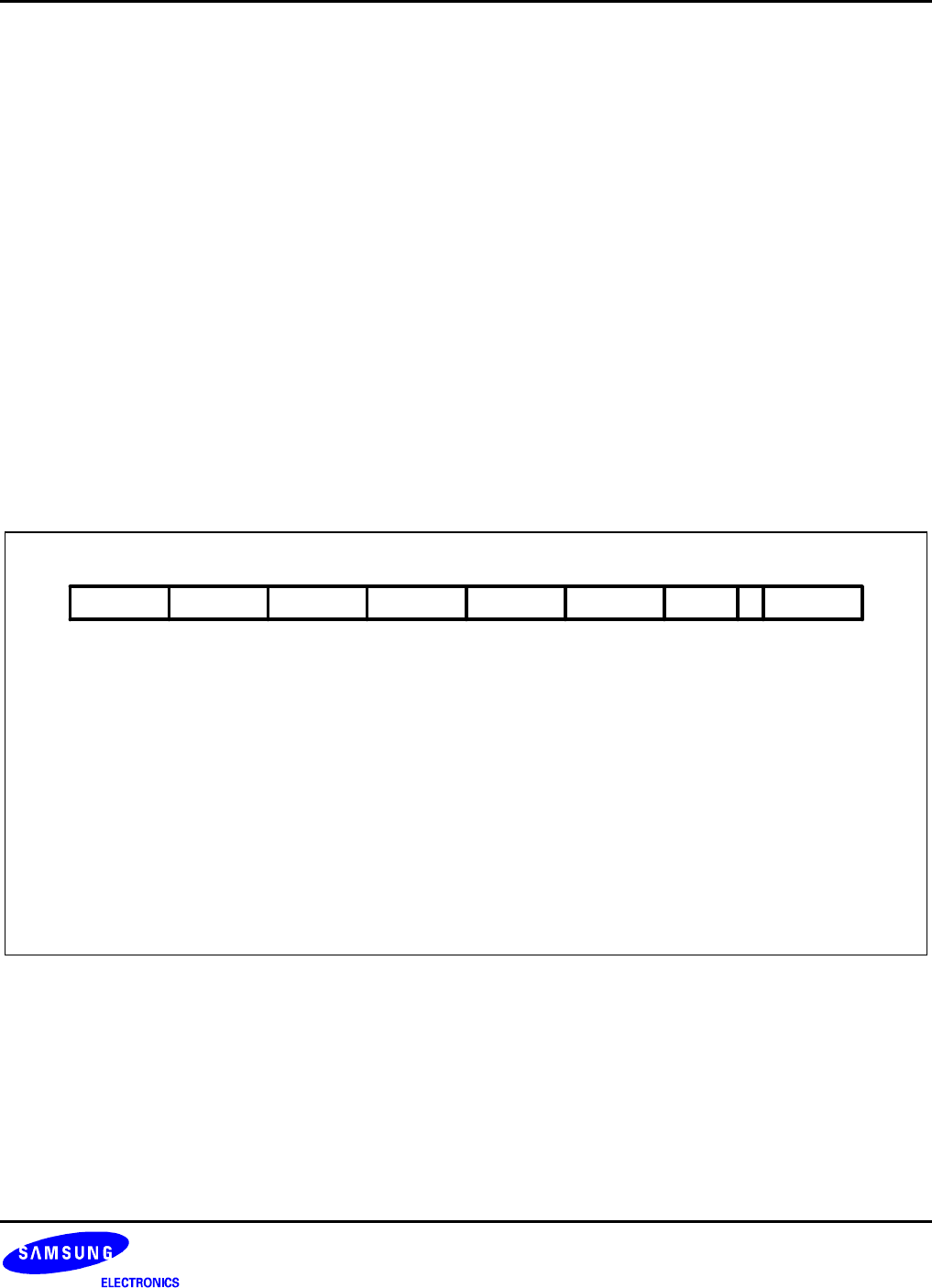
S3C2440A RISC MICROPROCESSOR ARM INSTRUCTION SET
3-51
COPROCESSOR DATA OPERATIONS (CDP)
The instruction is only executed if the condition is true. The various conditions are defined in Table 3-2. The
instruction encoding is shown in Figure 3-25.
This class of instruction is used to tell a coprocessor to perform some internal operation. No result is
communicated back to ARM920T, and it will not wait for the operation to complete. The coprocessor could contain
a queue of such instructions awaiting execution, and their execution can overlap other activity, allowing the
coprocessor and ARM920T to perform independent tasks in parallel.
COPROCESSOR INSTRUCTIONS
The S3C2440A, unlike some other ARM-based processors, does not have an external coprocessor interface. It
does not have a on-chip coprocessor also.
So then all coprocessor instructions will cause the undefined instruction trap to be taken on the S3C2440A. These
coprocessor instructions can be emulated by the undefined trap handler. Even though external coprocessor can
not be connected to the S3C2440A, the coprocessor instructions are still described here in full for completeness.
(Remember that any external coprocessor described in this section is a software emulation.)
31 2427 19 15
Cond CRm
28 16 111223 20
[3:0] Coprocessor operand register
[7:5] Coprocessor information
[11:8] Coprocessor number
[15:12] Coprocessor destination register
[19:16] Coprocessor operand register
[23:20] Coprocessor operation code
[31:28] Condition Field
0
CpCp#CRdCRn1110 CP Opc
87 543 0
Figure 3-25. Coprocessor Data Operation Instruction
Only bit 4 and bits 24 to 31 The coprocessor fields are significant to ARM920T. The remaining bits are used by
coprocessors. The above field names are used by convention, and particular coprocessors may redefine the use
of all fields except CP# as appropriate. The CP# field is used to contain an identifying number (in the range 0 to
15) for each coprocessor, and a coprocessor will ignore any instruction which does not contain its number in the
CP# field.
The conventional interpretation of the instruction is that the coprocessor should perform an operation specified in
the CP Opc field (and possibly in the CP field) on the contents of CRn and CRm, and place the result in CRd.


















